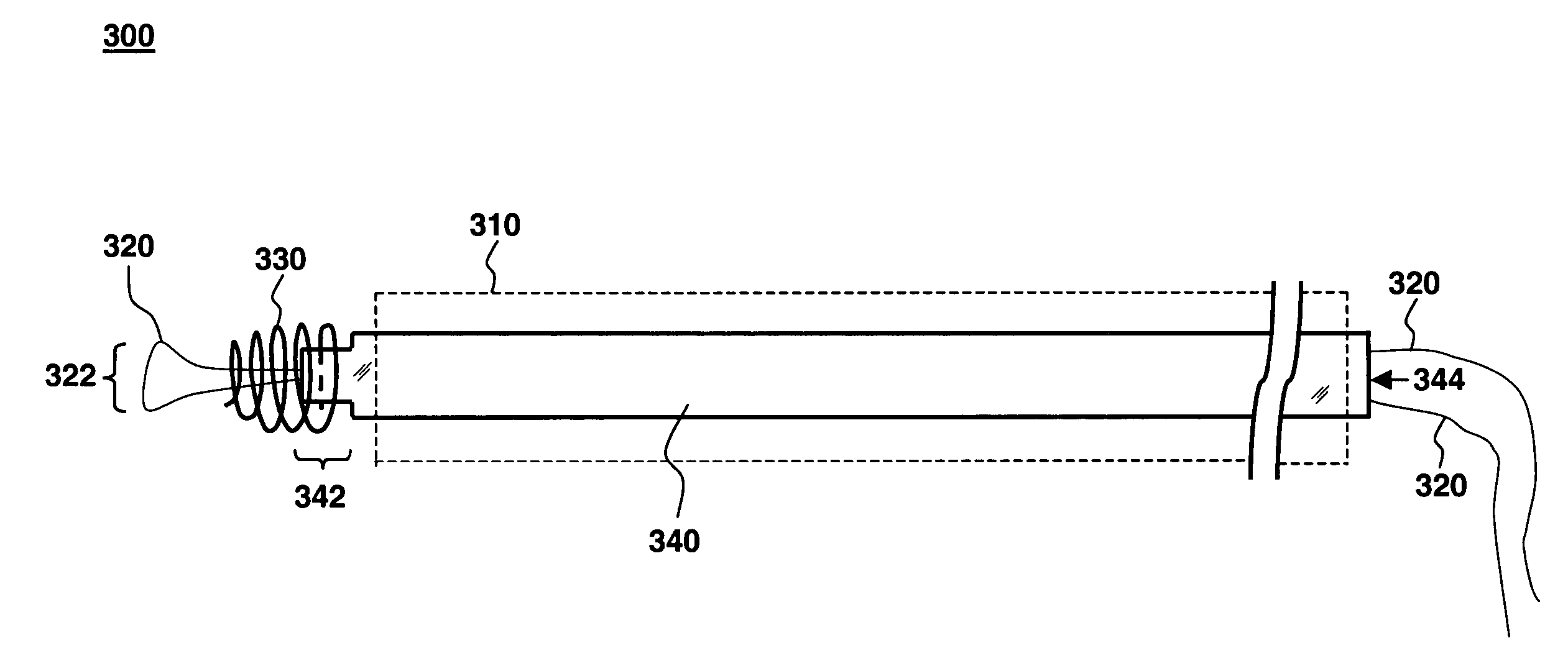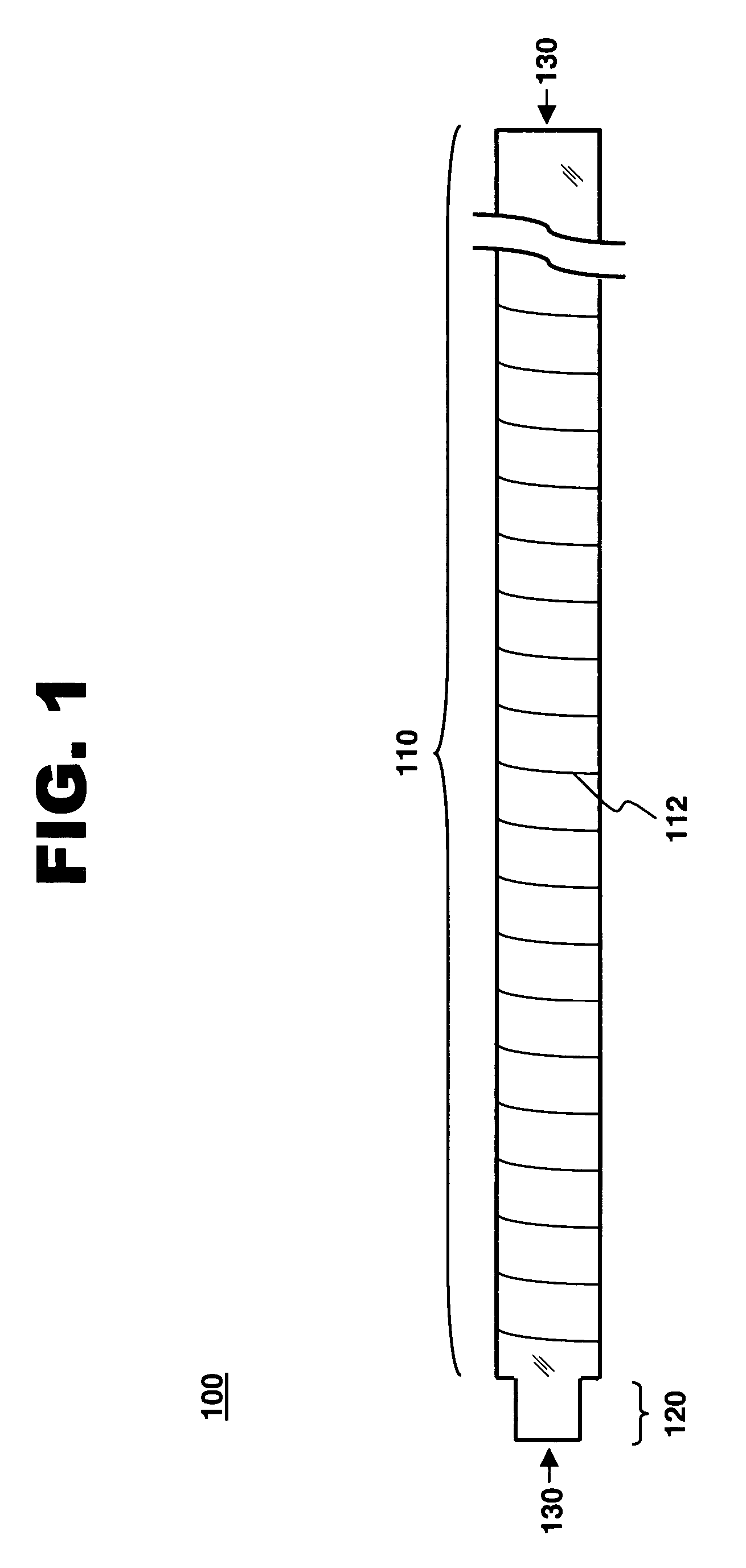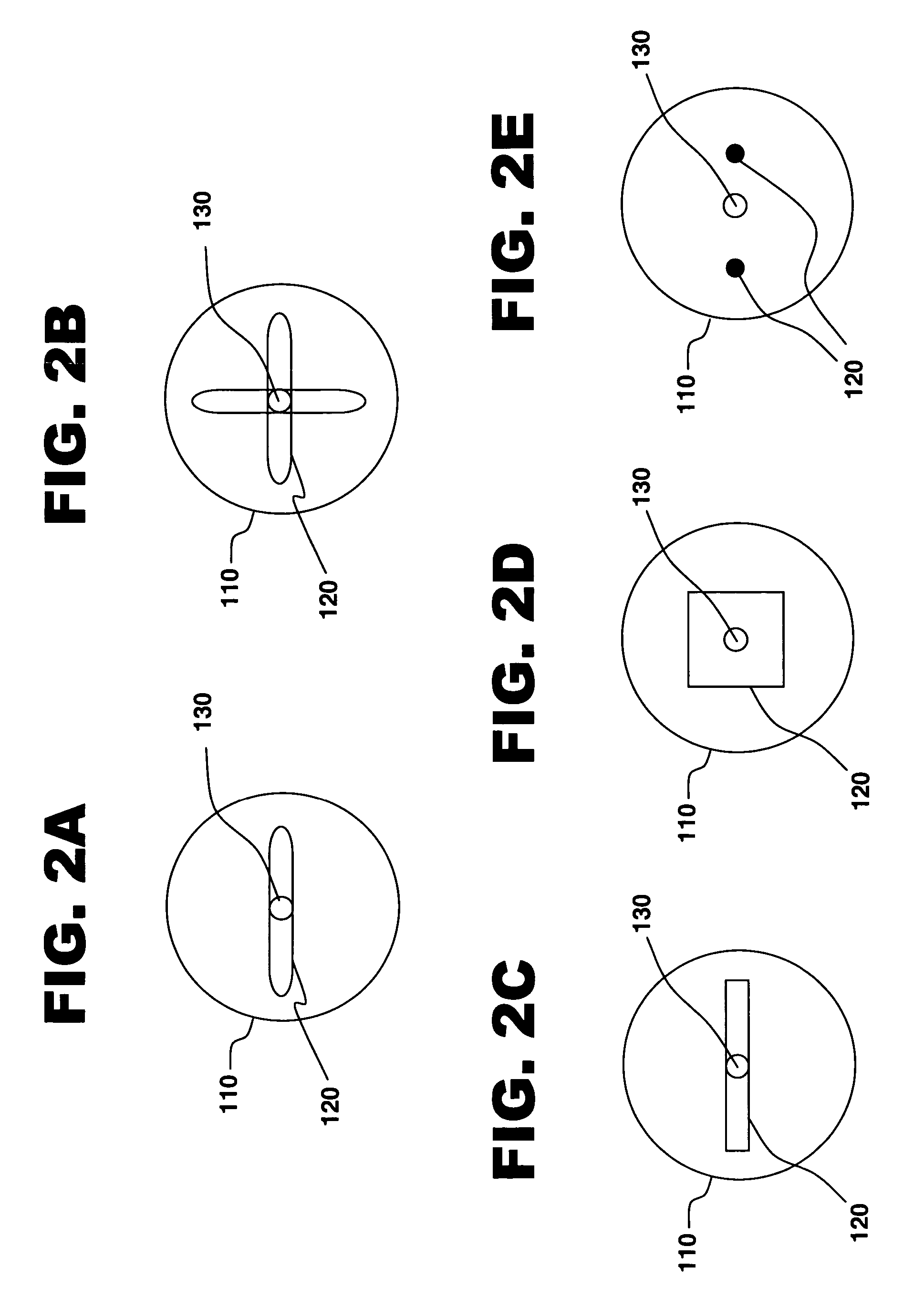Torquing device delivered over a guidewire to rotate a medical fastener
a technology of a guidewire and a rotating device, which is applied in the field of fasteners, can solve the problems of damage to the tissue, method may not be effective, and screw loss at the treatment si
- Summary
- Abstract
- Description
- Claims
- Application Information
AI Technical Summary
Problems solved by technology
Method used
Image
Examples
Embodiment Construction
[0016] One aspect of the present invention is an endovascular torquing device for a rotational fastener. One embodiment of the device, in accordance with the present invention, is illustrated in FIG. 1 at 100. Device 100 comprises a flexible body portion 110, a coupling portion 120, and a guidewire lumen 130 extending longitudinally through the device. The coupling portion interfaces with a rotational fastener such as a screw or a spiral (not shown) that is positioned within a vessel.
[0017] Flexible body portion 110 may be made using any suitable biocompatible material, including, but not limited to, stainless steel, nitinol, polymeric materials, and combinations thereof. In the present embodiment, flexible body portion 110 is a nitinol hypotube. Portion 110 is sized to extend outside the body of a patient when in use; however, in another embodiment, a tube with a guidewire lumen may be inserted into the proximal end of the body portion to extend the torquing device to the length d...
PUM
 Login to View More
Login to View More Abstract
Description
Claims
Application Information
 Login to View More
Login to View More - R&D
- Intellectual Property
- Life Sciences
- Materials
- Tech Scout
- Unparalleled Data Quality
- Higher Quality Content
- 60% Fewer Hallucinations
Browse by: Latest US Patents, China's latest patents, Technical Efficacy Thesaurus, Application Domain, Technology Topic, Popular Technical Reports.
© 2025 PatSnap. All rights reserved.Legal|Privacy policy|Modern Slavery Act Transparency Statement|Sitemap|About US| Contact US: help@patsnap.com



